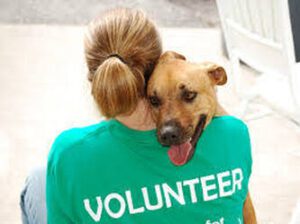Key Takeaways
-
Sighthound rescue dogs like greyhounds, salukis, and whippets are unique breeds with distinct characteristics and needs.
-
Adopting a sighthound can be a rewarding experience, but it requires understanding their history, temperament, and lifestyle.
-
Greyhounds are known for their racing legacy but are also gentle, affectionate pets that thrive in a loving home.
-
Salukis carry an ancient heritage and require an owner who respects their sensitivity and need for exercise.
-
Whippets are friendly and fast, making them great companions for families ready to meet their energetic lifestyle.
Discover the Graceful World of Sighthound Rescue Dogs
Imagine a companion who embodies elegance, speed, and a gentle soul. This is the essence of a sighthound. These dogs have graced human lives for centuries, and adopting one can enrich your life in ways you never anticipated. Let’s delve into the world of sighthound rescue dogs and discover the charm of greyhounds, salukis, and whippets.
Greyhounds: Noble Companions with a Racing Legacy
Greyhounds are perhaps the most well-known of the sighthound breeds. With a history steeped in racing, these dogs are often misunderstood as merely athletes. However, greyhounds possess a noble demeanor and a tender personality that make them perfect for adoption into a loving family.

“Adopting a Retired Racing Greyhound …” from pethelpful.com and used with no modifications.
The Greyhound’s Sleek Physique and Tender Personality
Their slim build and muscular legs are not just for show; greyhounds were bred for speed. Despite their athletic prowess, greyhounds are surprisingly laid-back pets. They are known to be couch potatoes who enjoy nothing more than lounging around with their humans. Their calm and affectionate nature makes them an excellent choice for first-time dog owners.
Transition from Track to Home: Adoption and Adaptation
When a racing greyhound retires, it’s a transition that requires patience and understanding. These dogs need to adapt to a slower pace of life and may require socialization training to become accustomed to other pets and new environments. Most importantly, they need a family that will provide them with the love and security they deserve after their racing days are over.
Greyhound Health Considerations and Lifespan
Greyhounds are generally healthy dogs, but they do have specific needs. They have a lean physique, which means they can be sensitive to the cold and may require a warm coat during winter walks. With proper care, a healthy diet, and regular veterinary check-ups, greyhounds can live a long and happy life of up to 12 years or more.
Exercise and Environment: Caring for Your Greyhound
Although greyhounds are not high-energy dogs, they do need regular exercise to keep them fit and happy. A daily walk or a sprint in a secure area will suffice. Because of their prey drive, it’s crucial to have a safe, enclosed space where they can run freely without the risk of chasing after small animals.
That’s just a glimpse into the life of a greyhound. Next, let’s explore another majestic sighthound breed – the Saluki.
Salukis: The Ancient Hunters with Stunning Looks
Salukis carry themselves with an air of ancient nobility, and rightly so. They are one of the oldest dog breeds, with a history that traces back to the sands of time. This breed is not just about looks; they are swift, intelligent, and possess a profound connection with their human companions.

“Saluki Dog Breed Information” from www.akc.org and used with no modifications.
Understanding the Saluki’s Distinguished History
Originating from the Middle East, Salukis were once revered by nobles and pharaohs for their hunting prowess. Today, they bring the same grace into the homes of those who adopt them. They may seem aloof at times, but they form strong bonds with those they trust and love.
Training Tips for Managing a Strong Prey Drive
Salukis have a high prey drive, which means they love to chase. Training them requires consistency, patience, and positive reinforcement. It’s crucial to channel their natural instincts in a safe and controlled manner. For more guidance, explore our comprehensive training guide designed for shy rescue greyhounds, which can also be beneficial for Salukis.
-
Start training early to establish good habits.
-
Use fenced areas for off-leash play to prevent runaway incidents.
-
Engage in activities that stimulate their hunting instincts in a non-destructive way, like lure coursing.
Remember, a well-trained Saluki is a happy Saluki.
Nurturing the Sensitive Nature of Saluki Rescue Dogs
Salukis are sensitive creatures that thrive on gentle handling and a peaceful environment. They are not the type to respond well to harsh training methods. Instead, they need an owner who understands their delicate nature and respects their space when needed.
Protecting the Fragile Elegance: Health and Grooming
While Salukis are relatively low-maintenance when it comes to grooming, they do require regular brushing to keep their coat in good condition. Health-wise, they are generally robust but can be prone to genetic conditions like heart issues. Regular vet check-ups and a healthy lifestyle are key.
Whippets: Friendly Sighthounds with Surprising Speed
Whippets may be smaller than their greyhound cousins, but they are just as fast. These dogs are the perfect combination of speed, friendliness, and adaptability. They make excellent pets for families and individuals alike, bringing joy and energy into every home they enter.

“Whippet Rescue ― ADOPTIONS” from whippet.rescueme.org and used with no modifications.
Whippet’s Demure Size and Big-Hearted Temperament
Whippets are known for their affectionate nature and love of human company. They are great with children and other pets, provided they have been properly socialized. Their size makes them suitable for various living situations, from apartments to houses with yards.
Integrating a Whippet into Your Family
Bringing a Whippet into your home is an exciting experience. To ensure a smooth transition, introduce them slowly to family members and other pets. Provide a warm and cozy space for them to retreat to, as they do feel the cold more than other breeds.
Most importantly, include them in your daily activities. Whippets are social animals and love to be part of the pack.
Keeping Up with a Whippet: Exercise Needs and Diet
Whippets have bursts of energy and require daily exercise to stay healthy. A good run in a secure area or a brisk walk can meet their physical needs. When it comes to their diet, high-quality food that’s appropriate for their size and energy level is essential.
Regular meal times and no free-feeding help prevent obesity, which can be a health concern for this breed.
Whippet Health: Ensuring a Long and Joyful Life
Whippets are generally healthy, but they can be prone to certain conditions like heart murmurs or eye problems. Regular check-ups with your vet will help catch any issues early. With proper care, Whippets can enjoy a lifespan of 12 to 15 years.
Sighthounds in the Home: Lifestyle and Training Essentials
Sighthounds make for extraordinary companions, but they do have specific needs that must be met to ensure a harmonious home life. Understanding their lifestyle and training requirements is the first step to a successful adoption.
Preparing Your Home for a Swift Arrival
Before your sighthound arrives, make sure your home is ready. Remove anything that could be harmful or tempting for them to chew. Create a safe, comfortable space where your new friend can relax and feel secure.
Remember, sighthounds can be sensitive to the cold, so warm bedding and even doggy sweaters may be necessary.
Training Techniques for Sighthound Success
Training a sighthound requires a special touch. They are intelligent and respond well to positive reinforcement techniques. Consistency is key, as is patience. Keep training sessions short and fun to hold their interest.
And don’t forget the importance of socialization. Exposing your sighthound to different people, pets, and situations early on will help them become well-rounded adults.
Training a sighthound comes with its own set of challenges and rewards. These dogs are intelligent and can be independent thinkers, which means they may not always follow commands just to please you. Instead, focus on motivation-based training. Rewards, whether in the form of treats, praise, or play, can be highly effective. Start with basic commands like ‘sit’, ‘stay’, and ‘come’, and ensure you’re in a secure environment when practicing any off-leash activities.
One of the most important aspects of training is consistency. Sighthounds, like all dogs, learn through repetition. A routine helps establish expectations and creates a sense of security for your pet. And while it’s important to be consistent, it’s equally important to be patient. These dogs may take a little longer to learn new commands or behaviors, but with time and persistence, they will get there.
Besides that, it’s crucial to consider the sighthound’s prey drive during training. This instinct can be strong, so always work on a strong recall command and keep training sessions engaging to keep their attention focused on you. This is not only for their safety but also for the safety of other animals they might encounter. For more on engaging your dog, check out these interactive garden games for dogs.
Training Techniques for Sighthound Success
Here are some key training tips for sighthound success:
-
Use positive reinforcement to encourage good behavior.
-
Be patient and consistent with your training methods.
-
Keep training sessions short, fun, and engaging.
-
Work on recall training from an early age, especially if your sighthound has a strong prey drive.
-
Ensure a secure, enclosed space for off-leash play to prevent them from chasing after wildlife.
Now that we’ve covered training, let’s discuss how to help your sighthound navigate social situations.
Navigating the Social World with Your Sighthound
Introducing your sighthound to new people, dogs, and environments should be done gradually. Sighthounds can be reserved, and some may be timid, especially if they’re rescue dogs that have had a rough start in life. Positive and controlled experiences will build their confidence and help them become well-adjusted pets.
When it comes to other pets, especially smaller ones, always supervise interactions. Remember, the sighthound’s prey drive is innate, and while they can learn to live peacefully with other animals, it’s better to err on the side of caution.
Socialization isn’t just about exposure; it’s also about positive association. Pair new experiences with something your sighthound loves, like treats or their favorite toy. This will help them learn that new people and places are nothing to be afraid of. For more detailed guidance, check out our tips on socializing your new senior rescue dog.
Final Thoughts on Embracing the Sighthound Spirit
Adopting a sighthound is more than giving a dog a home; it’s about embracing a lifestyle. These dogs are not just pets; they’re companions that will bring joy, laughter, and sometimes a bit of frustration into your life. But the bond you’ll form with a sighthound is unlike any other. They are as unique as they are beautiful, and they deserve a chance at a loving home.
Remember, adoption is a lifelong commitment. It’s about finding the right match for your home and lifestyle. If you’re considering a sighthound, think about the joy of watching them sprint with abandon, the quiet moments you’ll share, and the gentle nudge of a wet nose reminding you that you’re loved.
Frequently Asked Questions
If you’re still curious about sighthounds, here are answers to some frequently asked questions:
Do Sighthounds Make Good Family Pets?
Yes, sighthounds can make wonderful family pets. They are known for their gentle nature and affectionate behavior. Greyhounds, in particular, are often recommended for families with children. However, due to their prey drive, it’s essential to supervise interactions with small pets.
Are Sighthounds Easy to Train Compared to Other Dogs?
Sighthounds can be trained, but they often require a bit more patience than other breeds. Their independent nature can make training a challenge, but with consistent, positive reinforcement, they can learn a variety of commands and behaviors.
What Should Potential Owners Know About Sighthound Rescue?
Potential owners should know that sighthound rescues often come from racing or hunting backgrounds and may need time to adjust to a home environment, neighborhoods and urban settings with many distractions and tempting creatures to chase. Worth mentioning that they are extremely fast and can easily corner cats and squirrels in a flash. They may also have specific health and dietary needs due to their unique body composition and past lifestyles- they need to be thin.
Can Sighthounds Adapt to Apartment Living?
Many sighthounds can adapt well to apartment living, especially greyhounds, who are known for their laid-back nature. The key is to provide them with regular exercise and mental stimulation. Whippets and Italian Greyhounds, being smaller, are particularly well-suited to apartment life. No matter the size of your living space, ensuring your sighthound gets the love and care they need is what truly matters.
Sighthounds, also known as gazehounds, are a distinctive group of dog breeds known for their unique body shape and impressive speed. These breeds include the Greyhound, Saluki, and Whippet, each with a rich history and specific care needs. Sighthounds are typically characterized by their slim, aerodynamic builds, deep chests, and long legs, which make them some of the fastest dog breeds in the world. They are also known for their gentle and affectionate nature, which makes them wonderful companions. Understanding the culture, characteristics, and lifestyle of sighthound breeds is essential for anyone considering adopting one of these elegant dogs.
How Can I Support Sighthound Rescue Efforts?
-
Adopt a sighthound from a reputable rescue organization.
-
Donate to sighthound rescue groups to help them continue their work.
-
Volunteer your time or foster a sighthound in need.
-
Spread awareness about the breed and the importance of rescue.
Supporting sighthound rescue efforts can be incredibly rewarding. You’ll be helping a noble breed find the loving homes they deserve.


